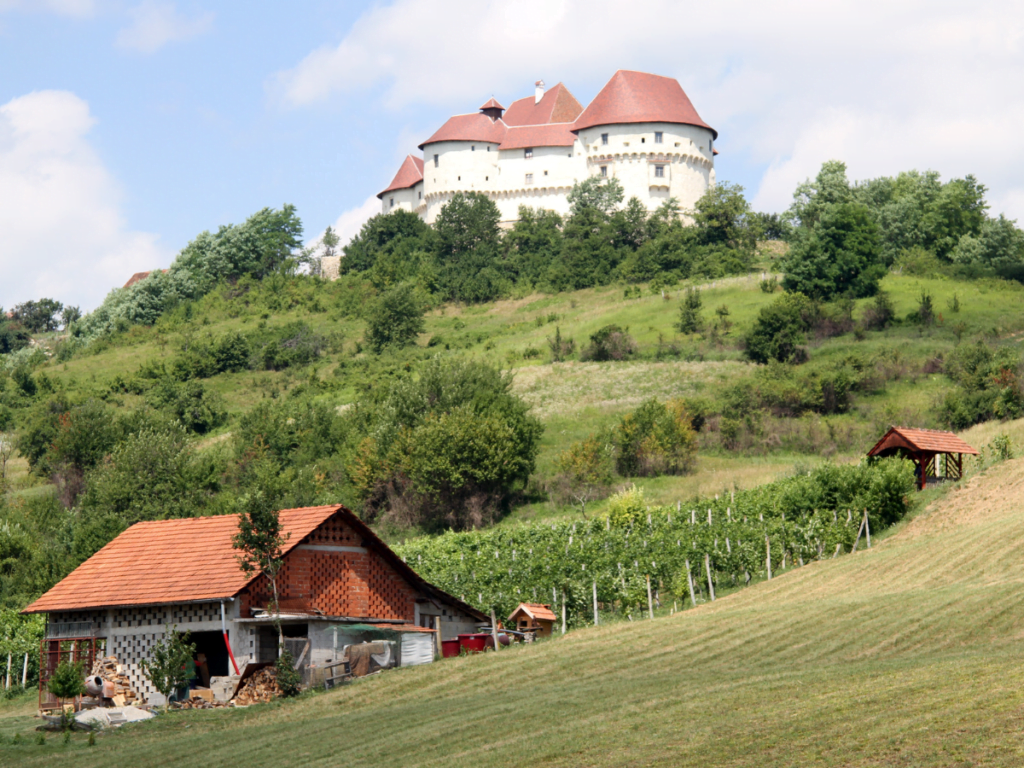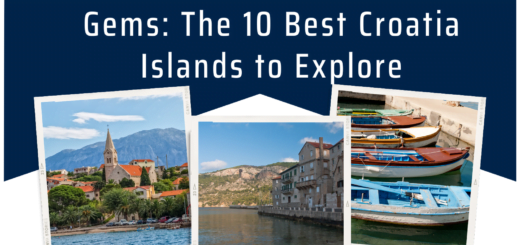A Guide to the Top 17 Croatia’s Historical Sites
Croatia has a rich cultural history, with Roman ruins, mediaeval fortifications, Renaissance castles, and Baroque cathedrals. Because of the rich heritage of historical sites that have been left by the nation’s long and turbulent past, it is a popular travel destination for people who value culture and history. We’ll take you on a tour of some of Croatia’s most fascinating historical places in this post.

Because of its strategic position at the meeting point of numerous civilizations and empires, including the Roman Empire, the Ottoman Empire, the Austro-Hungarian Empire, and the Yugoslav Federation, Croatia has a rich cultural heritage. This rich cultural heritage is a source of pride for Croatians and is represented in the nation’s architecture, art, music, and gastronomy.
17 historical locations that are a must-see for anybody interested in Croatia’s rich cultural heritage are highlighted in this article. The locations are listed in chronological order, starting with Pula’s Roman ruins and finishing with Zagreb’s modernist buildings. The list combines well-known sights like the Old Town of Dubrovnik with lesser-known treasures like the Euphrasian Basilica in Pore.
We shall examine 17 historical locations that represent Croatia’s rich cultural legacy in the sections that follow, ranging from early Roman ruins to modernist buildings.
Table of Contents
Diocletian’s Palace, Split
In the centre of the coastal city of Split, Diocletian’s Palace is a magnificent historical site. The palace, a masterpiece of Roman architecture created in the fourth century AD, was initially built as the emperor Diocletian’s retirement residence. The palace has had a number of uses throughout the years, including as a military outpost and a settlement for displaced people.
Imposing gates, gorgeous courtyards, the Peristyle centre plaza, and the underground dungeons are some of Diocletian’s Palace’s most notable features. The palace’s extensive history has been meticulously preserved, and many of its original structures still stand today, giving tourists an insight into life under the Roman Empire.
There are guided tours of the palace that tourists can take, and they may anticipate learning about the palace’s history, its architecture, and the people who have lived there throughout the ages. The cost of tickets varies based on the tour type and the time of year, but it is advised to reserve in advance to guarantee a space.
Overall, Croatia’s Diocletian’s Palace is a must-see historical landmark since it provides visitors with a singular and enthralling view into the nation’s rich cultural legacy.
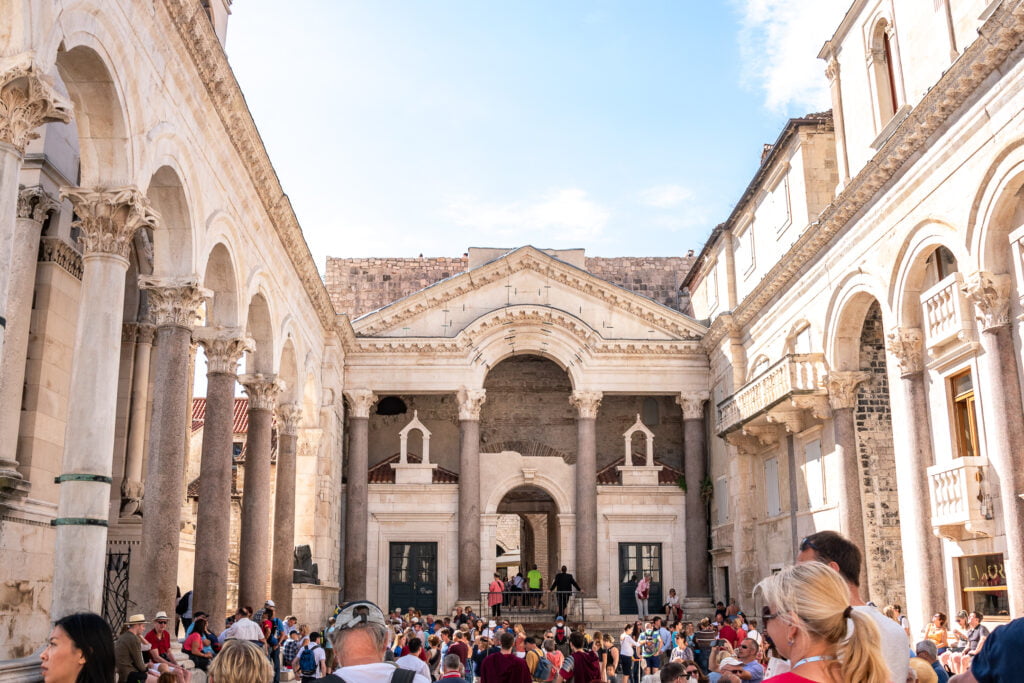
Split Old Town
One of Croatia’s most intriguing historical locations is Split Old Town. It is located in Split, which was historically the administrative centre of the Roman province of Dalmatia. The majestic Diocletian’s Palace, which the Roman emperor Diocletian built in the fourth century, served as the focal point of Split’s Old Town.
History of Split Old Town
The Roman era, when Split Old Town was a thriving harbour city, is when its history began. It has seen many historical occurrences throughout the years, including the fall of the Roman Empire, the entry of the Slavs, and the creation of the Croatian Kingdom. It has been home to numerous civilizations over the centuries.
Key features of Split Old Town
The Renaissance-style City Hall and the Gothic-style Venetian Castle are two examples of the spectacular architecture of Split Old Town, which is a UNESCO World Heritage Site. Numerous museums, galleries, and other cultural organisations that highlight the city’s rich heritage are also located in the Old Town.
Marjan Hill
In the centre of Split, Marjan Hill is a lovely nature area that provides breathtaking views of both the city and the Adriatic Sea. It is a well-liked location for picnicking, hiking, and running.
Guided tours and ticket prices
Numerous guided excursions are offered to see Split Old Town, and they frequently go to places like the Diocletian’s Palace and other monuments. The cost of the tickets varies depending on the tour and the individual locations covered. Additionally, visitors have the option to buy individual tickets for each attraction they intend to visit.
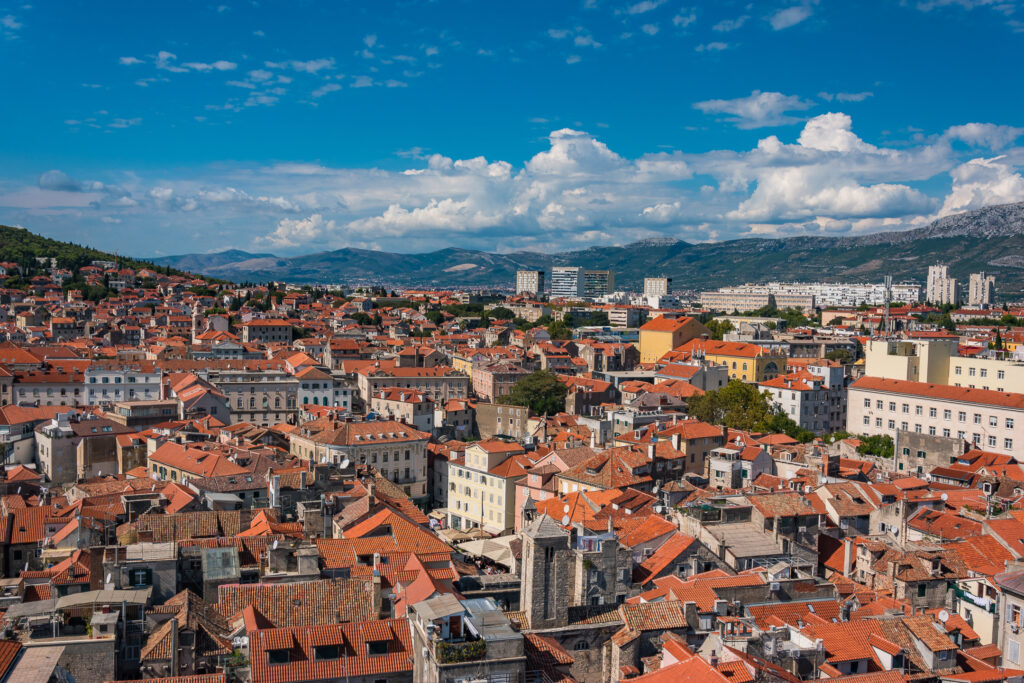
Dubrovnik City Walls
The most recognisable feature of the historic city of Dubrovnik, which has been a UNESCO World Heritage Site since 1979, is its city walls. To keep the city safe from invaders, these nearly 2-kilometer-long walls were constructed between the 12th and the 17th centuries.
History of Dubrovnik City Walls
The Dubrovnik City Walls were built over the course of five centuries, starting in the 12th century. The walls were repeatedly strengthened and enlarged during this time. The walls were up to 6 metres thick in certain areas and constructed of limestone blocks. One of the best protected towns in the world, the Dubrovnik Republic made significant fortification investments.
Walking the Walls
In Dubrovnik, walking the walls is a must-do activity that provides a distinctive view of the city. Awe-inspiring views of the Adriatic Sea, the adjacent islands, and the ancient town’s red-tiled rooftops may be seen from the walls. The most well-known of the numerous entrances to the walls is Pile Gate. Visitors can pause at the several turrets, bastions, and strongholds along the way as they traverse the length of the walls, which takes around 2 hours.
The views are simply breathtaking from the Dubrovnik City Walls. The Adriatic Sea, the neighbouring islands, and the ancient town’s red-tiled roofs are all visible. The view is especially beautiful at sunset, and it’s a well-liked location for pictures.
Guided tours and ticket prices
For those who are interested in learning more about the significance and history of the Dubrovnik City Walls, guided excursions are offered. In-depth knowledge on the walls is provided by tour guides, who often provide amusing anecdotes and tales. The cost of the Dubrovnik City Walls tickets, which are available at the gate, varies with the season. To escape the crowds and the heat, it is advised to attend either early in the morning or late in the afternoon.
Any visitor to Croatia should make time to visit the Dubrovnik City Walls. The views are stunning, and walking the walls is a truly unique experience.
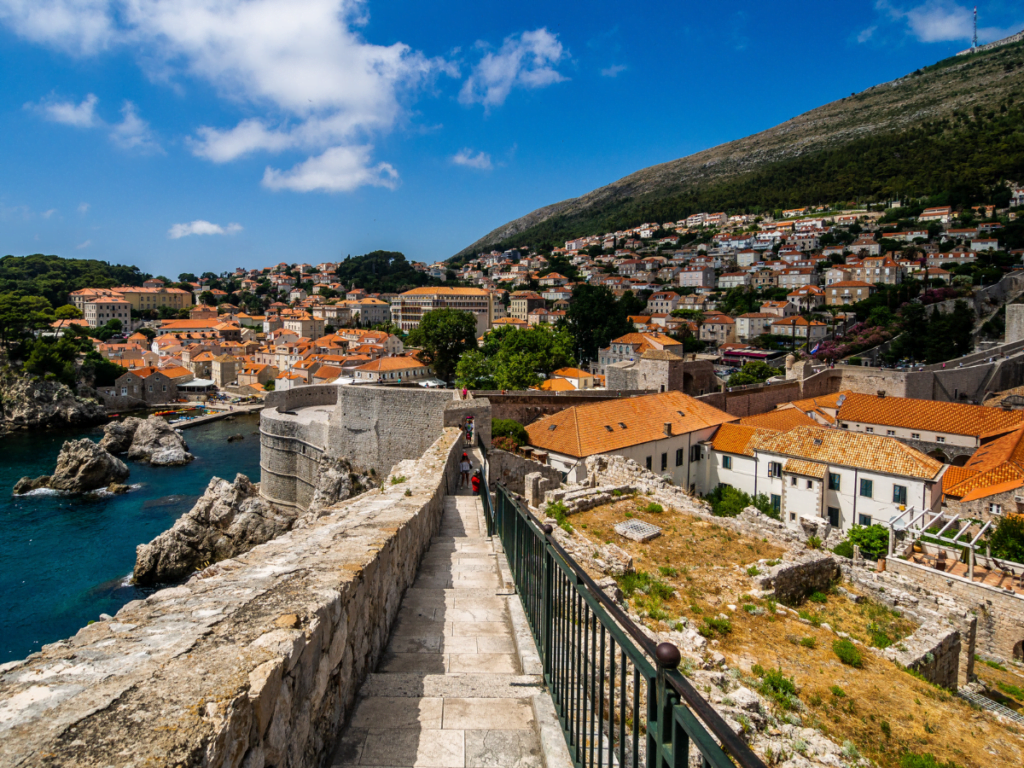
Pula Arena: A Historical Gem in Croatia
On the Istrian Peninsula, in the city of Pula, lies one of Croatia’s most spectacular and well-preserved Roman amphitheatres. Here is all the information you require about this historical treasure.
History of Pula Arena
The Pula Arena, constructed in the first century AD, hosted public events like mock sea battles and animal hunts in addition to gladiator fights. One of the six largest Roman amphitheatres in the world, the amphitheatre had a capacity of up to 23,000 people. The arena has hosted numerous occasions throughout the years, including fairs, mediaeval jousts, and even residences.
Key Features of Pula Arena
The spectacular amphitheatre has dimensions of 133 by 105 metres and a height of 32 metres. It is a beautiful example of Roman architecture and is constructed of local limestone. The arena floor and seating area, as well as the underground rooms where the gladiators and animals were housed prior to the events, are still visible to visitors. Awe-inspiring views of the surroundings can be found on the higher elevations.
Events at Pula Arena
The Pula Film Festival, which takes place every summer, as well as concerts, theatrical productions, and other events are still held at the Pula Arena today. The arena’s great acoustics make it a well-liked location for music events. There have been numerous performances here by well-known musicians like Luciano Pavarotti, Elton John, and Sting.
Guided Tours and Ticket Prices
The arena can be toured or explored independently by guests. A greater understanding of the history and design of the arena is provided by the guided tours, which are offered in a number of languages. The cost of the tickets varies based on the event and the time of year, but they are often reasonable. Throughout the summer, the amphitheatre is accessible to guests every day from 8 a.m. until 8 p.m.
For anybody with an interest in history, architecture, or music, Pula Arena is a must-see. It is a distinctive Croatian attraction due to its amazing size and excellent preservation. Visitors may fully appreciate the history and beauty of the arena through guided tours and activities.
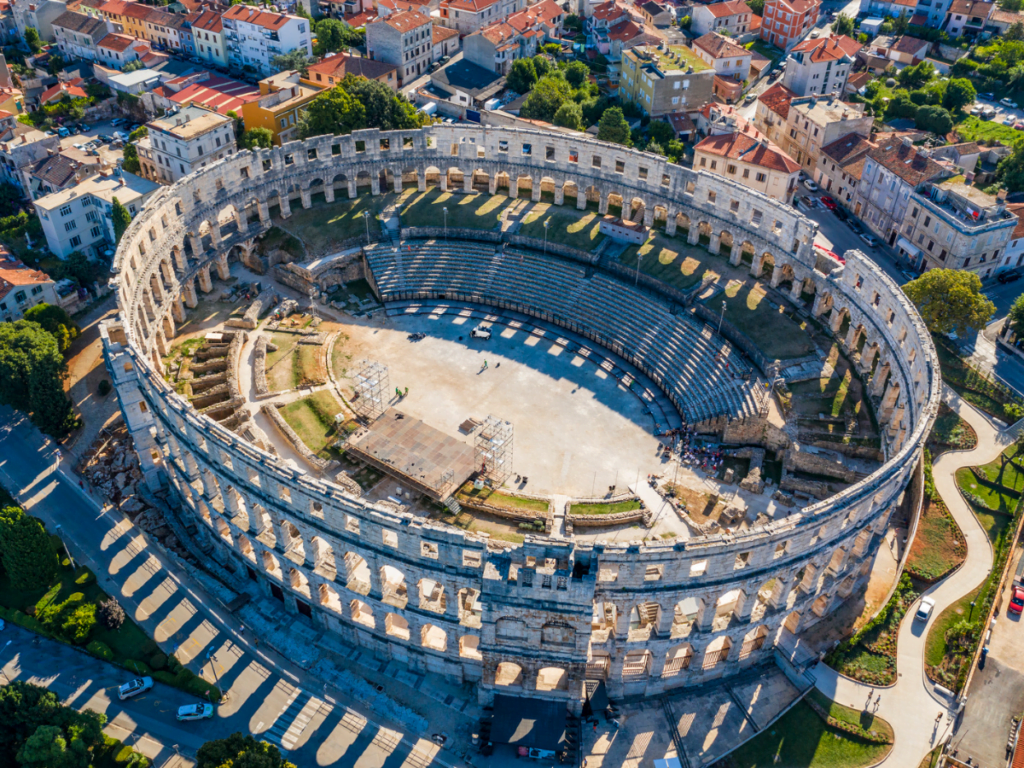
Trogir Old Town
A UNESCO World Heritage site, Trogir Old Town is situated on the central Adriatic coast. Between the Croatian mainland and the bigger island of Iovo, the settlement is located on a small island. Its lengthy history extends back to the time of the Greeks and Romans, and the historic centre is surrounded by buildings from the Renaissance and mediaeval periods.
History of Trogir Old Town
The Greeks established Trogir Old Town in the third century BC, and the Romans later settled there. Due to its advantageous position, the town served as a significant commerce hub during the Middle Ages and the Renaissance. Throughout its history, the town’s ownership has changed multiple times, and each new owner has left their stamp on the architecture of the city.
Key features of Trogir Old Town
One of Europe’s best-preserved examples of mediaeval architecture is the old town of Trogir. A wall that encloses the town was constructed in the 15th century as defence against Ottoman incursions. The town’s winding lanes are lined with various palaces, churches, and monasteries in addition to wonderfully maintained stone buildings.
St. Lawrence Cathedral
The St. Lawrence Cathedral, also known as the Cathedral of St. John the Baptist, is the centrepiece of Trogir Old Town. The cathedral, one of Croatia’s most significant cultural landmarks, is a magnificent example of Romanesque and Gothic architecture. The great portal of the church is very striking since it has a carved relief of the Last Judgement.
Guided tours and ticket prices
Numerous travel companies offer guided tours of Trogir’s Old Town, which usually last for two hours. Tickets for the St. Lawrence Cathedral can be purchased at the door for about five euros. In the summer, the cathedral is open from 7 am to 7 pm, and from 8 am to 4 pm in the winter.
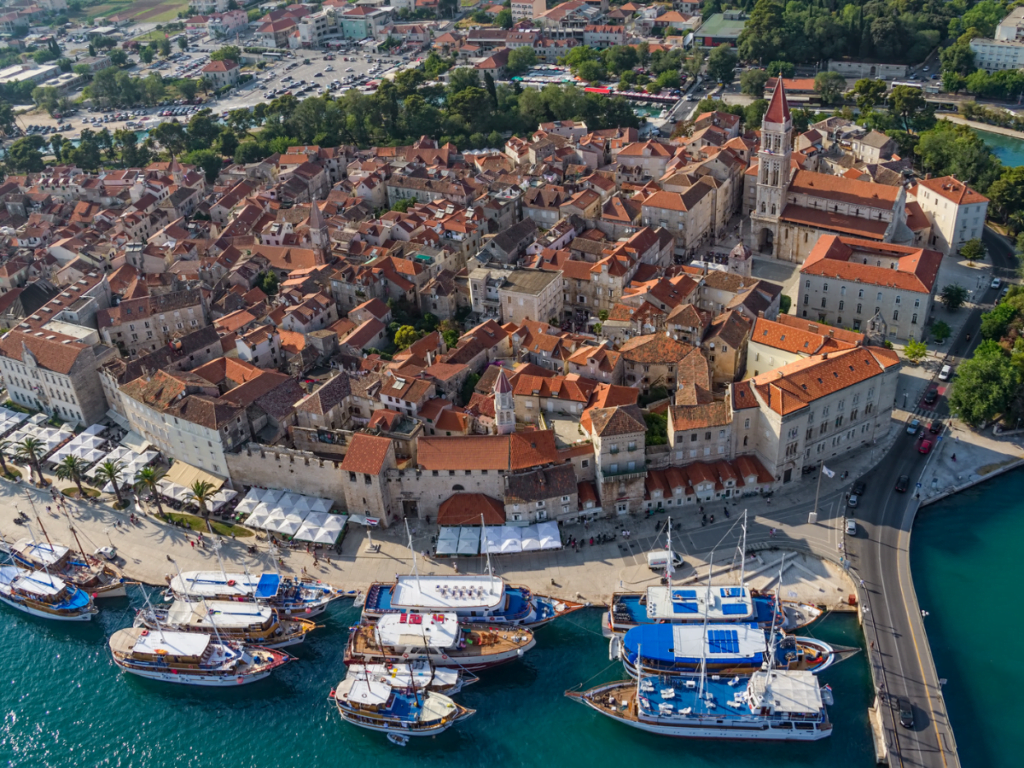
Euphrasian Basilica
In the Istrian town of Poreč, there is a historic ecclesiastical structure called the Euphrasian Basilica. One of the earliest and best-preserved examples of Byzantine architecture in the Mediterranean area is the basilica. As a UNESCO World Heritage Site, it draws numerous tourists from all over the world.
History of Euphrasian Basilica
During the Byzantine Empire’s reign in the sixth century AD, the Euphrasian Basilica was constructed. It was constructed where a former Christian church once stood and was erected in honour of Saint Maurus, the first bishop of Poreč. The bishop Euphrasius, who provided funding for the church’s rebuilding and refurbishment, is honoured by the basilica’s name.
Key features of Euphrasian Basilica
The basilica is renowned for its exquisite murals and mosaics that adorn the church’s walls and ceilings. These portray scenes from the lives of Jesus Christ and the Virgin Mary and were made in the Byzantine style. Another prominent element of the basilica is its façade’s beautiful stone sculptures.
Guided tours and ticket prices
The Euphrasian Basilica offers guided tours that provide visitors an understanding of the building’s history and architecture. If you opt to take a guided tour or explore the church on your own, the cost of the tickets varies and may be purchased on-site. All year long, with the exception of few holidays, the basilica is accessible to visitors.
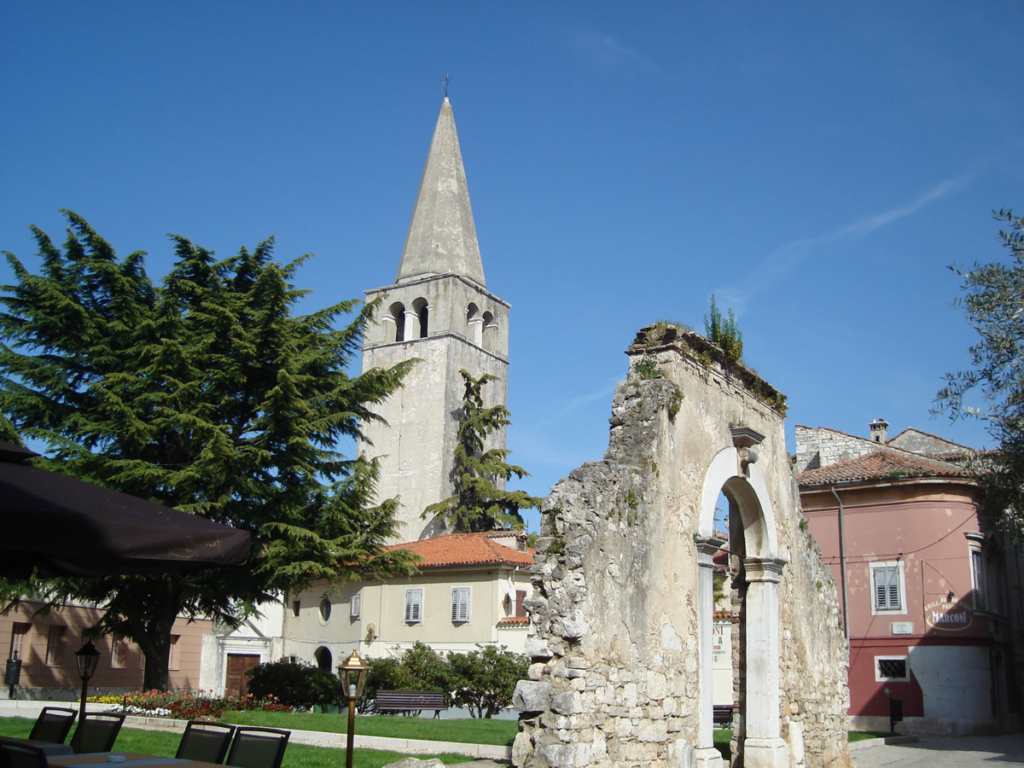
Trakošćan Castle
History of Trakošćan Castle
One of Croatia’s best-preserved mediaeval castles, Trakošćan Castle, is situated in the north of the nation close to the Slovenian border. When it belonged to the Celjski family, it was first mentioned in historical records in the thirteenth century. Throughout its history, the castle was owned by numerous noble families before being abandoned in the 18th century. A Croatian noble family bought it in the late 19th century, repaired the castle, and made it into a museum.
The four-story rectangular Trakošćan Castle has corner towers, a central courtyard, and is constructed of stone. The castle’s numerous halls and chambers can be explored by guests, and they are adorned with antiques and artefacts from various historical eras. The castle also houses a sizable collection of artwork, armour, and weapons.
Guided tours and ticket prices
Visitors to Trakošćan Castle can learn about the castle’s extensive history and the lives of its former occupants during guided tours that are offered in both Croatian and English. At the castle’s gate, tickets can be purchased. The cost of the ticket depends on the type of tour and the age of the buyer. The castle is always accessible to guests, though the hours may change according to the season.
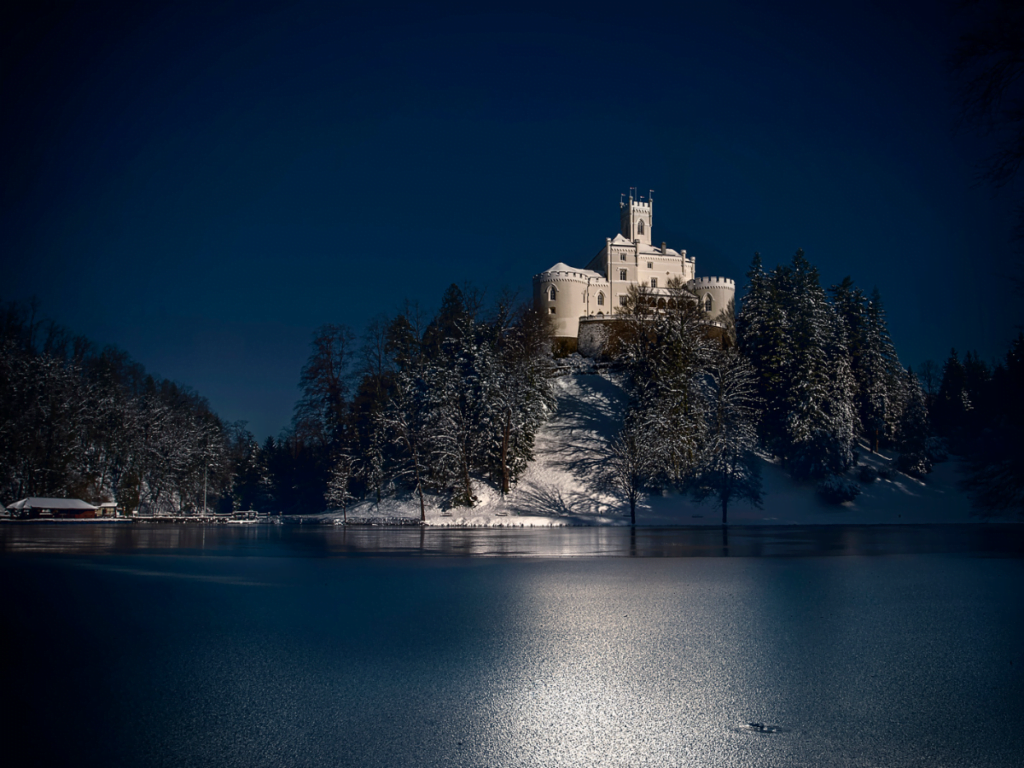
Šibenik Cathedral
The beautiful Šibenik Cathedral, also known as St. James Cathedral, has been recognised by UNESCO as a World Heritage Site since 2000. It was constructed between the 15th and 16th centuries and is regarded as one of Croatia’s most significant examples of Renaissance architecture. Juraj Dalmatinac, a well-known Venetian architect, created the church.
Šibenik Cathedral’s distinctive fusion of Gothic and Renaissance styles is one of its most noticeable characteristics. Numerous sculptures and beautiful brickwork are used to decorate the cathedral’s exterior. The interior is similarly spectacular, featuring several works of art in the Renaissance style and a gorgeous vaulted ceiling. The 71 carved faces that adorn the exterior apse of the cathedral are among its most distinctive characteristics. These faces are thought to depict common citizens of Šibenik and its surroundings.
All throughout the year, Šibenik Cathedral offers guided tours with qualified guides who give in-depth explanations of the cathedral’s history and design. You can purchase tickets for guided tours online or at the cathedral’s entry. The sort of tour you take and whether you choose an audio guide will affect the cost. The cathedral is open every day and offers visitors the opportunity to attend mass there. Donations are accepted to help maintain and restore this significant historical monument, but admission is free.

Zadar Old Town
A must-see location for both history aficionados and environment lovers is Zadar Old Town. The town has roots that go back to the Roman era, and it has a beautiful waterfront setting on the Adriatic Sea. The following are some of the top sights to see in Zadar Old Town:
Sea Organ
The water Organ, an artwork project that turns the sound of the water into music, is one of Zadar’s most distinctive tourist attractions. The Sea Organ, which can be found on the waterfront, is made up of a number of pipes that are set up underneath the steps that lead down to the water. With each tide’s ebb and flow, the waves’ impact on the pipes produces a variety of musical tones.
Sun Salutation
Another well-liked piece of public art in Zadar Old Town is The Sun Salutation. A sizable round disc that is embedded in the pavement next to the water makes up the installation. A number of solar panels that make up the disc collect energy from the sun during the day. A mesmerising show of colours is produced when the disc lights up at night.
History of Zadar Old Town
The history of Zadar Old Town is lengthy, intricate, and rich. The town has been inhabited since the prehistoric era, and Neolithic-era settlements are still visible today. Zadar was governed by numerous nations over the years, including the Romans, Byzantines, and Venetians.

Stari Grad Plain: A UNESCO World Heritage Site on Hvar Island
History of Stari Grad Plain
On the northern part of the island of Hvar, there is a rich agricultural region known as the Stari Grad Plain. Since Greek colonists first came to the island in the fourth century BC, the plain has been utilised for agricultural purposes. Greeks exploited the plain to grow grapes and olives and gave the town the name Pharos. Later, the Romans arrived on the island and kept cultivating the plain. One of the world’s longest continually farmed regions, the plain has been used for agriculture for more than 2,400 years.
Key features of Stari Grad Plain
The plain is a prime example of the ancient Greek practise of chora, or poljes, which included dividing agricultural plots into long, slender strips. Even today, grapes and olives are grown on the historic terraces and walls that still stand.
Since it is the best-preserved example of Greek agriculture in the Mediterranean, the Stari Grad Plain was included on the UNESCO World Heritage List in 2008.
Guided tours and ticket prices
The Stari Grad Plain offers guided excursions where visitors may learn about the history of the plain and its historic agricultural practises. Local farmers who are educated about the region’s history and cultural significance frequently lead the trips.
The plain is free to see, however depending on the tour organisation, guided trips could cost money. Visitors are urged to assist regional farmers by acquiring locally produced goods including olive oil and wine as well as other food.
For individuals who love history and culture, sustainable agriculture, and traditional land-use methods, Stari Grad Plain is a must-visit location.
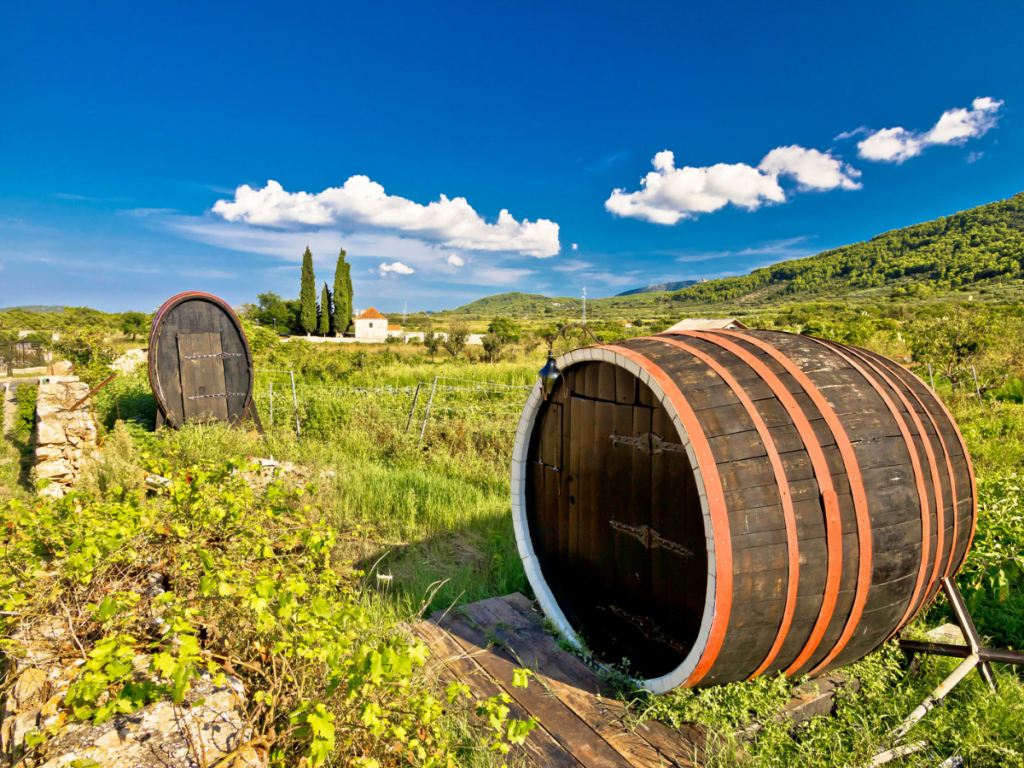
Brijuni National Park
14 islands make up the Brijuni National Park, which is situated in Croatia’s northwest. The park is well-known for its distinctive flora and fauna as well as its rich cultural and historical history. We shall examine the background and salient characteristics of Brijuni National Park in this part.
History of Brijuni National Park
The Brijuni Islands have been inhabited from the Palaeolithic epoch, according to archaeological evidence. The Romans, the Byzantines, the Venetians, and the Austro-Hungarians were only a few of the empires and states that ruled over the islands. Brijuni became a well-liked holiday destination for European nobles and political figures in the 20th century. The islands were converted into a national park during this time.
Key features of Brijuni National Park
More than 700 plant species and 250 bird species can be found in the park, which has a broad mix of flora and animals. Additionally, a variety of animals, such as deer, rabbits, and peacocks, are visible to visitors. Numerous historical and cultural sites, like as Roman ruins, Byzantine forts, and the 16th-century St. Mary’s Church, can be found at Brijuni.
Visitors are urged to join a guided tour in order to properly appreciate Brijuni National Park’s natural beauty and cultural heritage. You can choose from a variety of trips, including walking and boat tours. The cost of the tours varies according to the length and type of tour. The price of park admission varies based on the time of year and the type of admission. It is advised to get tickets in advance to guarantee availability and prevent long waits.

Nin Old Town
The picturesque and historic town of Nin Old Town, which is situated on a small island just off the coast of Croatia, is frequently disregarded by visitors. Nin, despite its small size, has a fascinating history and several noteworthy sights, making a trip there highly recommended.
History of Nin Old Town
Nin, which dates to the ninth century, once served as a significant political and ecclesiastical hub in Croatia. The ruins of the former royal castle can still be seen today. It served as the residence of the Croatian monarchs and bishops during the Middle Ages. The town has a long history of producing salt, which was a significant source of wealth for the locals.
Key features of Nin Old Town
The Church of the Holy Cross, a tiny church that is thought to have been constructed by the Croatian monarch Tomislav in the tenth century, is one of Nin Old Town’s most outstanding characteristics. The church is renowned for its distinctive architecture, which includes a bell tower and a dome that are both distinct from the main structure.
The Church of St. Nicholas, the smallest cathedral in the world, is also located in Nin. Despite its size, the cathedral houses a sizable collection of religious artwork, which includes a wooden crucifix from the 12th century and a silver reliquary from the 14th.
Guided tours and ticket prices
It is possible to take a guided tour of Nin Old Town, which is a terrific way to discover more about the town’s past and attractions. The cost of guided tour tickets varies based on the length and type of tour and may be purchased at Nin’s tourist information centre.
Visitors may also wander around the town on their own in addition to the guided tours. Although some museums and other cultural institutions may charge a nominal entrance fee, Nin Old Town attractions are generally free to enter.
Despite being small, Nin Old Town is bursting with charm and history. A trip to Nin is unquestionably worthwhile if you want to find a hidden treasure in Croatia.
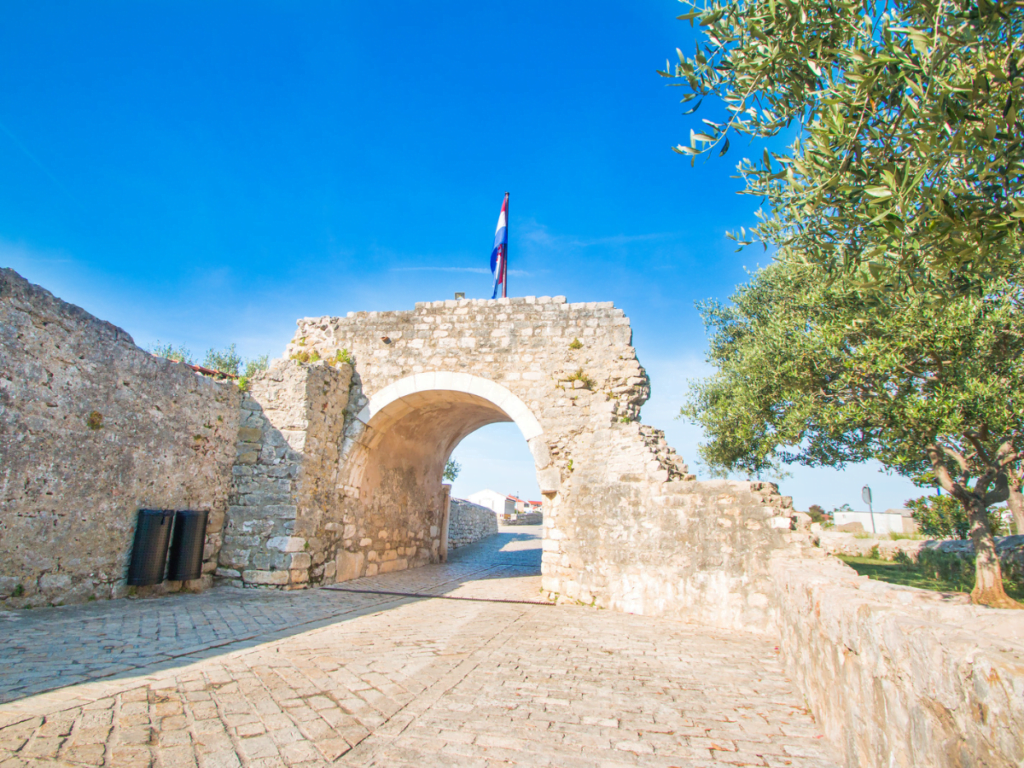
Osijek Fortress
Osijek Fortress, one of Croatia’s most spectacular and historically significant landmarks, is situated in the country’s easternmost region. Let’s examine the background and salient characteristics of this amazing site.
History of Osijek Fortress
The Austrian Habsburgs constructed the Osijek Fortress in the 18th century as a component of their defence system against the Ottoman Empire. The fortress played an important role in numerous conflicts and battles over the years, acting as a key defensive position in the area. Nazi Germany seized the castle during World War II before Yugoslavia took control of it in 1945.
Key features of Osijek Fortress
On the right bank of the Drava River, the stronghold is encircled by a moat and a wall with seven bastions. The Austrian generals who defended the castle from the Ottoman Empire are honoured by the bastion names. Visitors can explore the stunning Baroque architecture of the fortress’s interior buildings and structures, which have been renovated and preserved over time.
Guided tours and ticket prices
The fortress can be toured by those who are interested in learning more about its extensive history and cultural value. The tours usually run an hour and cover the walls, bastions, and other prominent structures of the stronghold. Since the guided tours are offered in several different languages, they are accessible to visitors from all over the world.
There are several age and residency-based ticket fees for the Osijek Fortress guided tour, and there are special rates for youth, the elderly, and groups. Children under the age of seven are admitted free of charge, while tickets for adults are reasonably priced.
A breathtaking historical site not to be missed is Osijek Fortress. For any history enthusiast or traveller exploring Croatia’s eastern area, the stronghold is a must-visit location because of its extensive history, stunning architecture, and cultural significance.
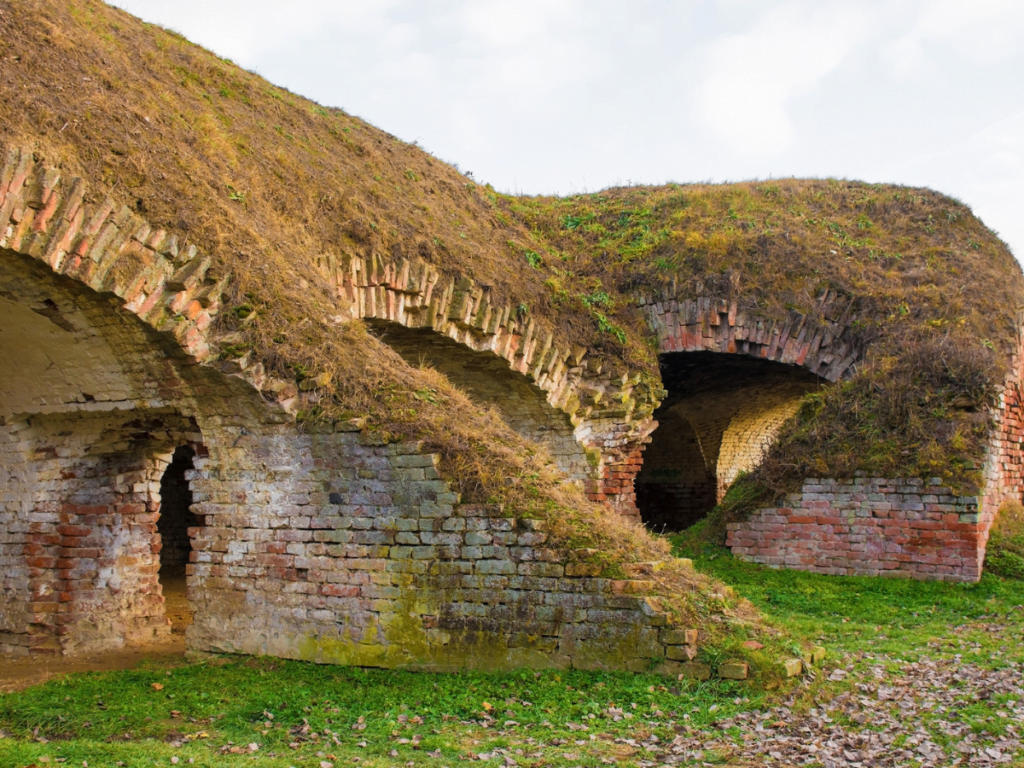
Varaždin Old Town
Varaždin is a charming city located in the north of Croatia, famous for its beautifully preserved Baroque architecture. Its Old Town is a testament to the city’s rich history and is a popular tourist destination in Croatia. Here’s a guide to the history and key features of Varaždin Old Town:
History of Varaždin Old Town
Varaždin was the capital of Croatia from the 18th century until 1776 when a fire destroyed much of the city. As a result, the capital was moved to Zagreb, and Varaždin became a provincial town. However, this disaster proved to be a blessing in disguise for the city’s Old Town as it preserved its historical buildings and architecture, making it one of the best examples of Baroque architecture in Croatia.
Key features of Varaždin Old Town
Walking around Varaždin Old Town is like stepping back in time. The city’s pastel-colored buildings, intricate facades, and cobbled streets give it a unique charm. Some of the must-see attractions in Varaždin Old Town include:
- The Old Castle – the oldest part of the town, built in the 14th century as a fortified town.
- The Town Hall – a beautiful Baroque building with a clock tower that overlooks the main square.
- Stari Grad Cemetery – one of the most beautiful and unique cemeteries in Europe, with tombstones dating back to the 16th century.
Guided tours and ticket prices
Visitors to Varaždin Old Town can join guided tours to learn more about the city’s history and architecture. The tours usually take around 2 hours and cost around 10 EUR per person. Alternatively, visitors can explore the Old Town at their own pace for free. Many of the key attractions are within walking distance of each other, making it easy to explore the city on foot.
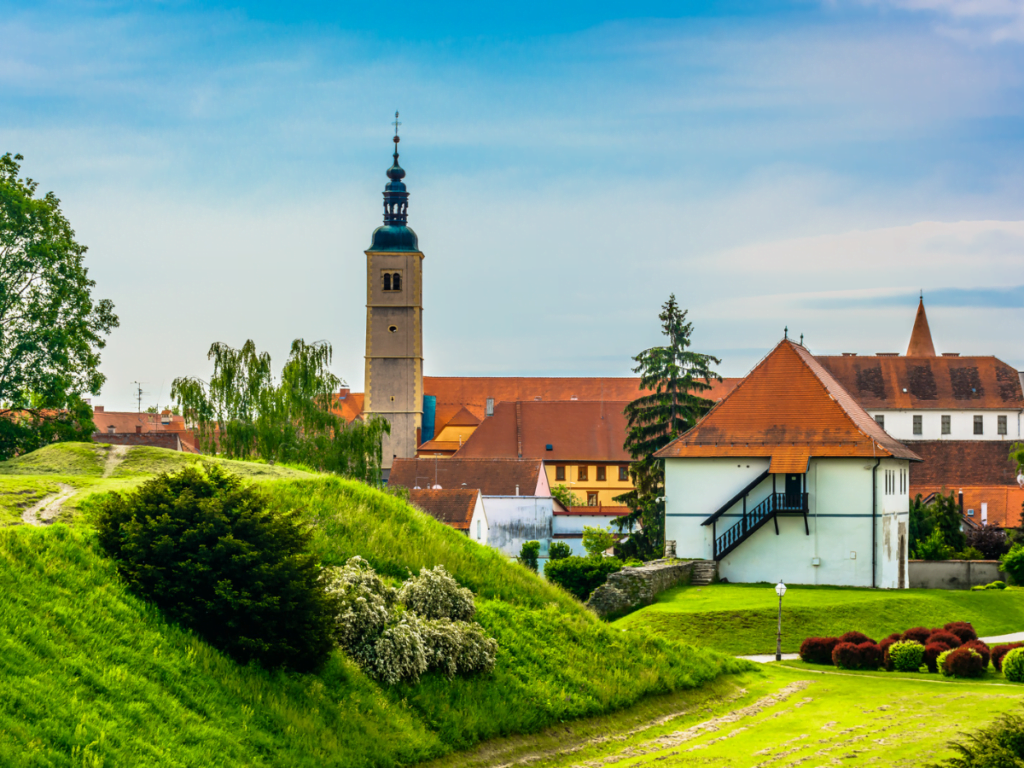
Solin Amphitheatre
In the hamlet of Solin, which lies just outside the city of Split, is where you’ll find the Solin Amphitheatre, a true gem in the heart of Croatia. The Romans constructed this historic amphitheatre in the second century AD for gladiatorial combats and other sorts of entertainment. The Solin Amphitheatre has been conserved over time to provide tourists with a window into the past
History of Solin Amphitheatre
During the height of the Roman Empire, in the second century AD, the Solin Amphitheatre was built. It was constructed to serve as a location for gladiatorial contests and other entertainment events including animal fights and public executions. The amphitheatre was mostly neglected and in decay after the fall of the Roman Empire. Later, it was used into a quarry for building supplies, further harming the building.
Key features of Solin Amphitheatre
The Solin Amphitheatre is still a wonderful historical landmark despite the damage it has sustained over the years. Approximately 130 metres long and 100 metres wide, the amphitheatre has an oval shape. It originally had an underground system of tunnels and rooms for the gladiators and animals, and it could accommodate up to 15,000 spectators. Intricate carvings and ornamentation are among the elaborate architectural characteristics of the amphitheatre.
Guided tours and ticket prices
Visitors to the Solin Amphitheatre have a choice of self-guided tours or guided tours offered by informed locals. The amphitheatre’s history and significance are fascinatingly explored on guided tours, which normally last an hour. Prices for tickets to events at the Solin Amphitheatre start at just a few euros per person. Before making travel plans, guests should confirm the opening times as they may change with the season.
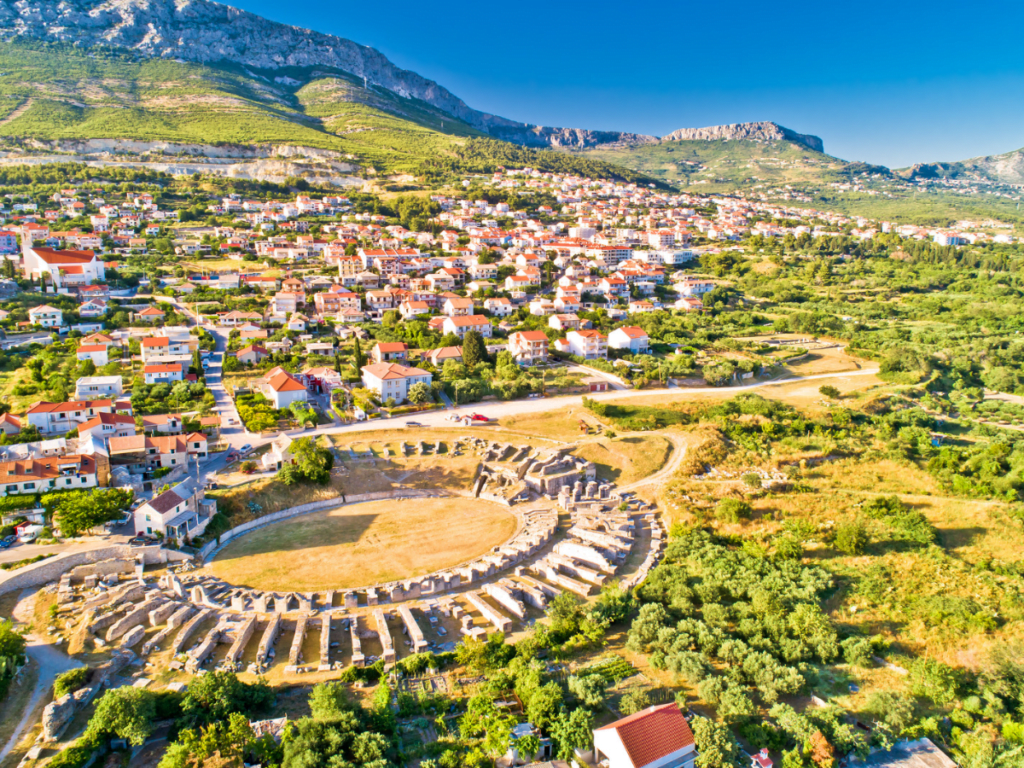
Etnographic Museum Zagreb
One of Croatia’s oldest and most renowned museums is the Etnographic Museum in Zagreb. It is devoted to preserving and promoting Croatia’s and the neighbouring areas’ cultural heritage. The museum, which was established in 1919, is home to a vast collection of more than 80,000 artefacts, including traditional attire, furniture, religious artefacts, and musical instruments.
The museum was established soon after World War I, at a time when Croatia underwent significant cultural and social transformation. Its goal was to uphold and support Croatians’ and their neighbours’ traditional ways of life. Since then, the museum has expanded to become one of Europe’s most significant organisations of its sort.
The collection of the museum is divided into a number of thematic areas, each of which highlights a distinctive facet of traditional life in Croatia and its neighbouring nations. The displays feature customary attire, jewellery, utensils, religious artefacts, and musical instruments from numerous countries and eras. The collection of traditional Croatian apparel, which includes elaborate needlework and vibrant textiles, is one of the most well-liked exhibits.
In conclusion, everyone interested in Croatia’s and its neighbours’ rich cultural legacy should make time to visit the Etnographic Museum Zagreb. The museum is an ideal site to learn about the traditional way of life of the Croatian people and their surrounding regions because of its huge collection, skilled personnel, and reasonably priced entrance pricing.
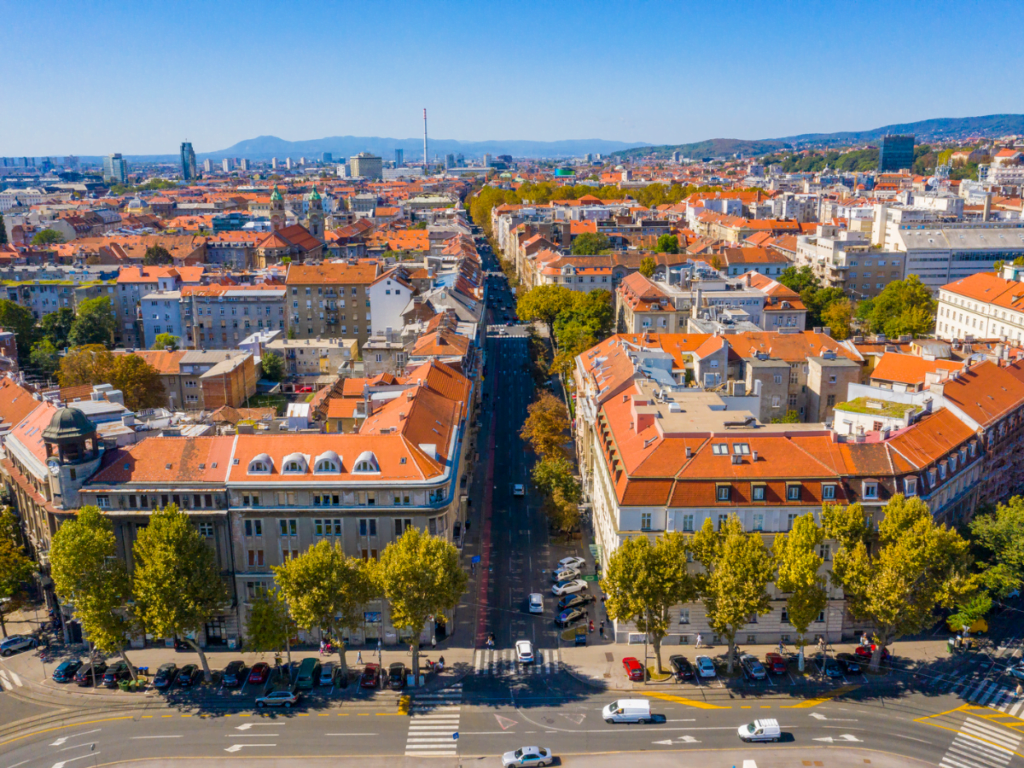
Veliki Tabor Castle
One of the most fascinating of Croatia’s many historic castles and archaeological sites is Veliki Tabor Castle. History aficionados and lovers of architecture must visit this magnificent mediaeval castle, which is situated in the Hrvatsko Zagorje region.
History of Veliki Tabor Castle:
The castle was constructed as a defensive structure in the 12th century. It underwent numerous modifications over the years, including a Gothic makeover in the 15th century and Renaissance extensions in the 16th. The Croatian word for the castle is “Veliki Tabor,” which translates to “Great Camp.” The noble Ratkaj family lived there for many years.
Key features of Veliki Tabor Castle:
The castle has a distinctive and spectacular aspect due to its architecture, which combines Gothic, Renaissance, and Baroque styles. The interior of the castle is embellished with murals and artwork from many eras, and the courtyard contains a beautifully preserved Renaissance fountain. The chapel, kitchen, and living quarters of the castle are among the rooms that guests can tour. These spaces have been converted into a museum where items from the 16th to the 19th century are on show, including furniture, artwork, and other artefacts.
Guided tours and ticket prices:
There are guided tours available, and guests can tour the castle while being informed about its illustrious past by a knowledgeable guide. Children under the age of seven can enter for free, and the admission price is reasonable. The castle also organises a number of cultural events, including music festivals and exhibitions, making it a perfect vacation spot for people of all ages.
The historical and cultural landmark Veliki Tabor Castle offers a window into Croatia’s illustrious past. It is a must-visit location for all history aficionados because of its magnificent architecture and distinctive fusion of styles.
